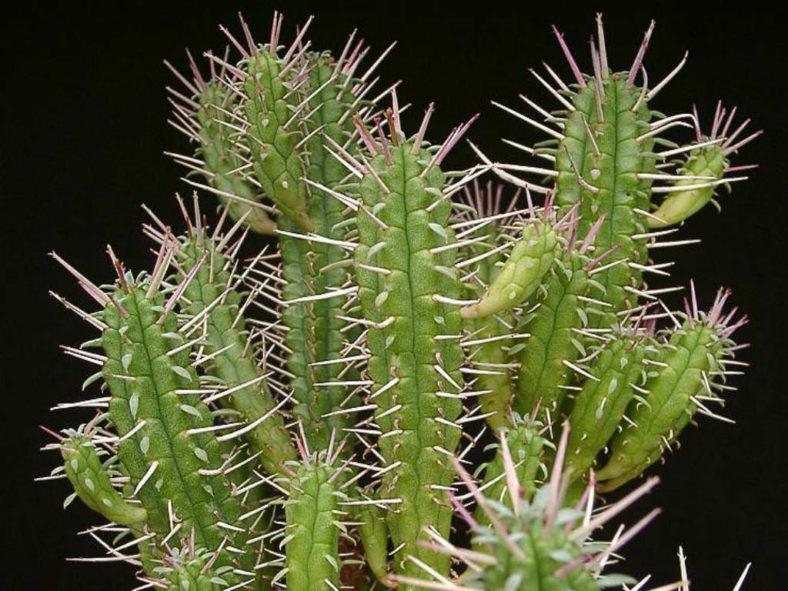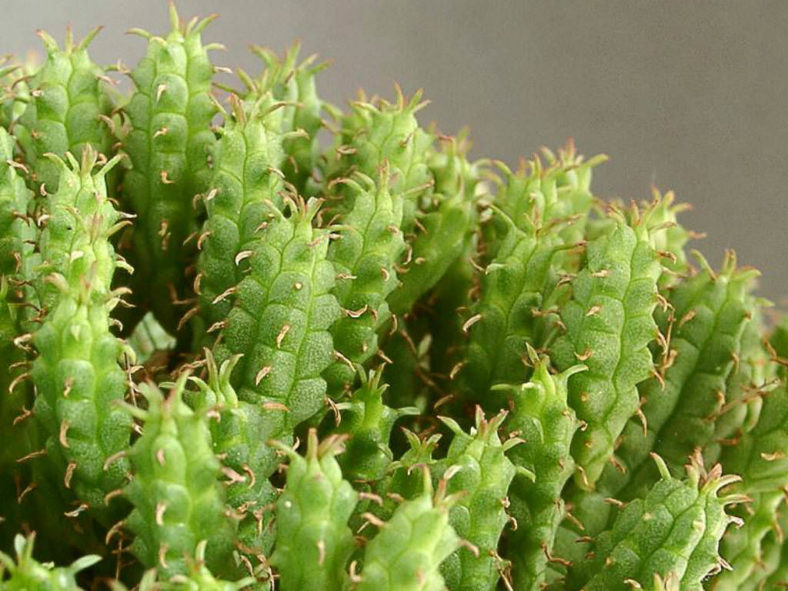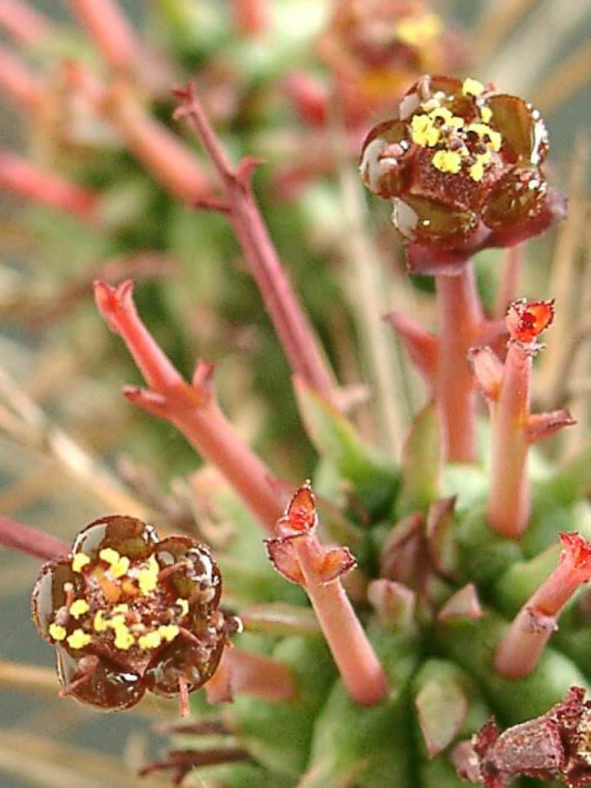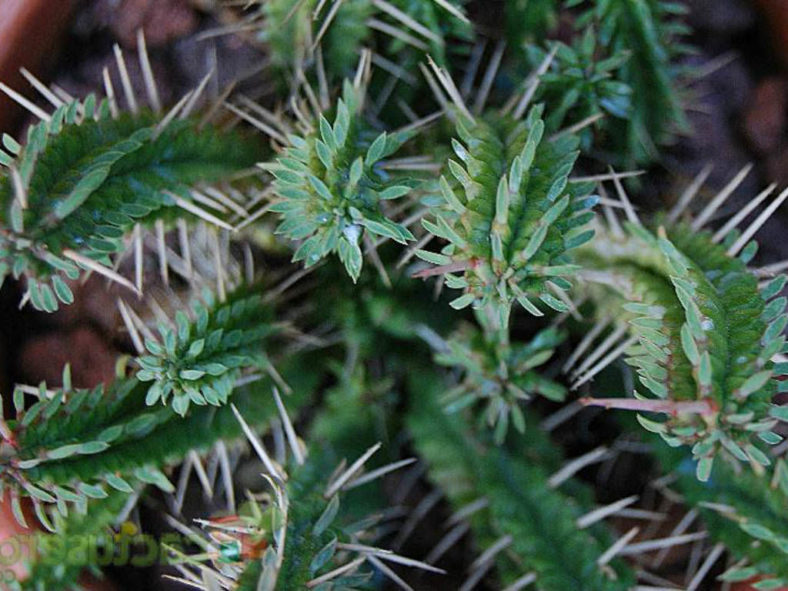Scientific Name
Euphorbia submamillaris (A.Berger) A.Berger
Synonym(s)
Euphorbia cereiformis var. submamillaris
Scientific Classification
Family: Euphorbiaceae
Subfamily: Euphorbioideae
Tribe: Euphorbieae
Subtribe: Euphorbiinae
Genus: Euphorbia
Etymology
The specific epithet "submamillaris" (pronounced "sub-mam-il-LAIR-iss"), frequently spelled "submammillaris," means "almost mamillaris" and refers to the resemblance of this species to Euphorbia mammillaris.
Origin
Euphorbia submamillaris is native to South Africa (Cape Province).
Description
Euphorbia submamillaris is a dwarf, densely-branched succulent shrub with spiny 7- to 10-ribbed branches. It can grow up to 8 inches (20 cm) tall, while the branches can reach a length of 4 inches (10 cm) and a diameter of 1 inch (2.5 cm). The tiny leaves are green, lance-shaped, rudimentary, soon deciduous, and present only at the top of the new branch. The spines are solitary, sterile peduncles that can measure up to 0.8 inches (2 cm) long.
The solitary flowers are wine red, clustered at the end of the branches, and can reach a diameter of 0.2 inches (5 mm).

How to Grow and Care for Euphorbia submamillaris
Hardiness: USDA hardiness zones 9b to 11b: from 25°F (3.9°C) to 50°F (10°C).
Euphorbias are very easy to care for. These plants require a little pampering to become established, but once they are, they are self-sufficient. More die from overcare and overwatering than from neglect. Euphorbias need well-draining soil and ample sunlight. They are not particular about soil pH, but cannot tolerate wet soil. Unlike most succulents, Euphorbia does not handle long periods of drought well. It may need weekly watering during the summer. Water whenever the top several inches of the soil are dry. Water deeply, but avoid letting them sit in wet soil, as this can cause root rot. Add some organic matter or fertilizer to the planting hole. Feed with a half-strength fertilizer monthly if you are growing them in containers or your soil is poor.
These succulents can be grown from seeds, but they can be difficult to germinate or even find. They are usually propagated by cuttings. This can be tricky because of the exuding sap. Rooting hormone is recommended with Euphorbia. They tend to grow problem-free, but a few pests and diseases are worth being alert for.
See more at How to Grow and Care for Euphorbia.
Links
- Back to genus Euphorbia
- Succupedia: Browse succulents by Scientific Name, Common Name, Genus, Family, USDA Hardiness Zone, Origin, or cacti by Genus
Photo Gallery
Click on a photo to see a larger version.


